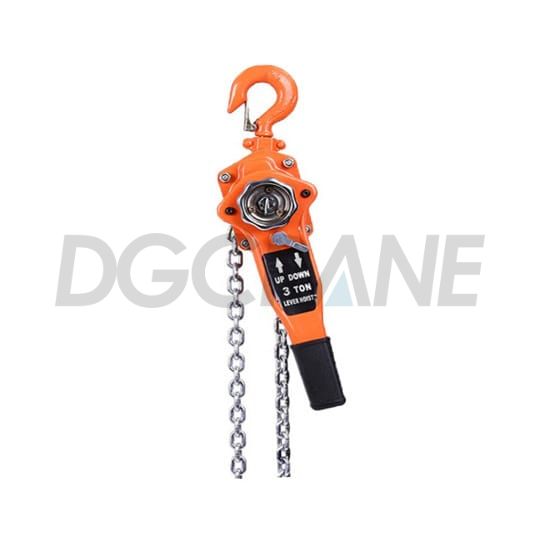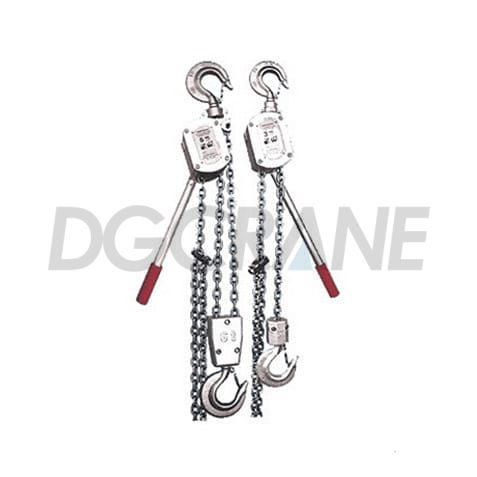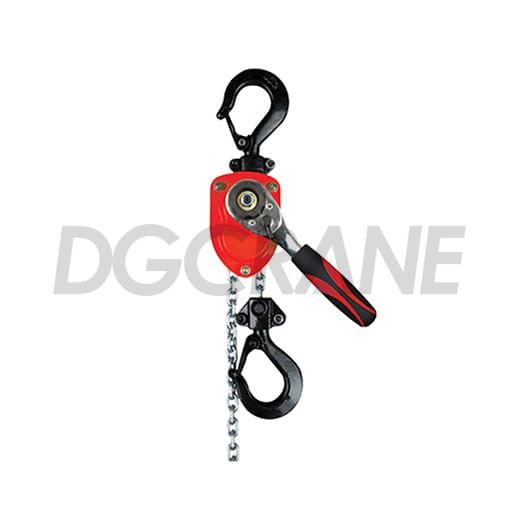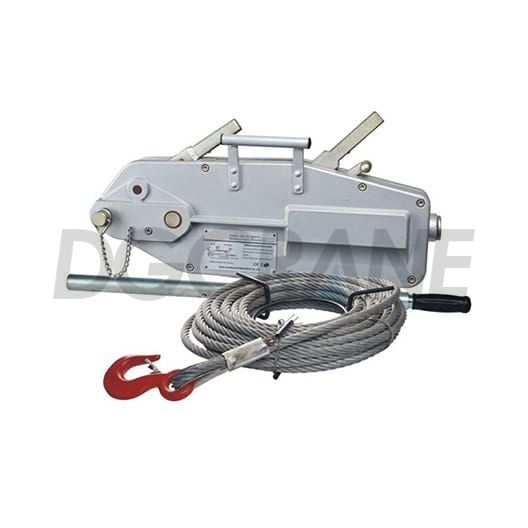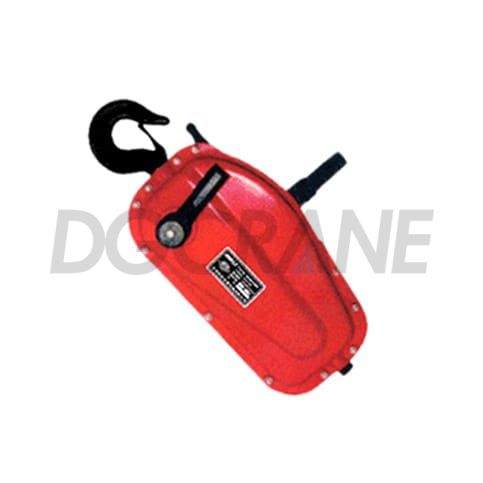Lever Hoists: Compact, Versatile Manual Lifting Tool
The lever hoist is widely used in sectors such as electric power, mining, shipbuilding, construction, transportation, and telecommunications for equipment installation, material lifting, component pulling, bundling of loose items, line tensioning, and welding alignment. It is especially advantageous in confined workspaces, outdoor high-altitude operations, and for pulling at various angles.
0.25-9t Chain Lever Hoist
The lever hoist is operated manually by pulling the handle, making it suitable for lifting heavy loads and installing equipment. It can be used independently or in combination with other lifting devices such as a monorail trolley.
Featuring a unique elastic clutch mechanism, it meets height-specific operational needs by allowing lifting at any height. The lever system is highly responsive, enabling smooth and effortless operation. The hooks are forged for exceptional toughness and impact resistance.
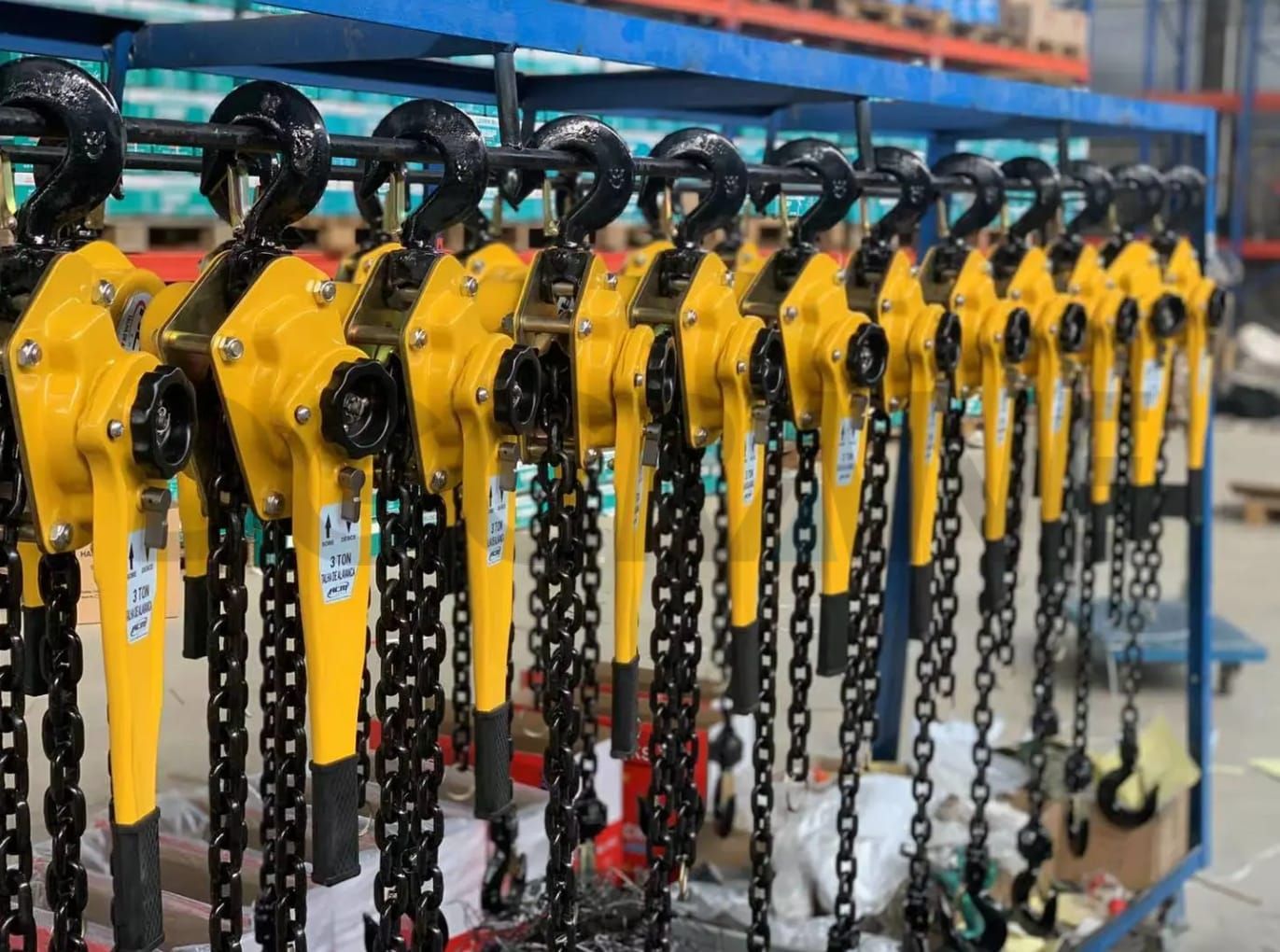
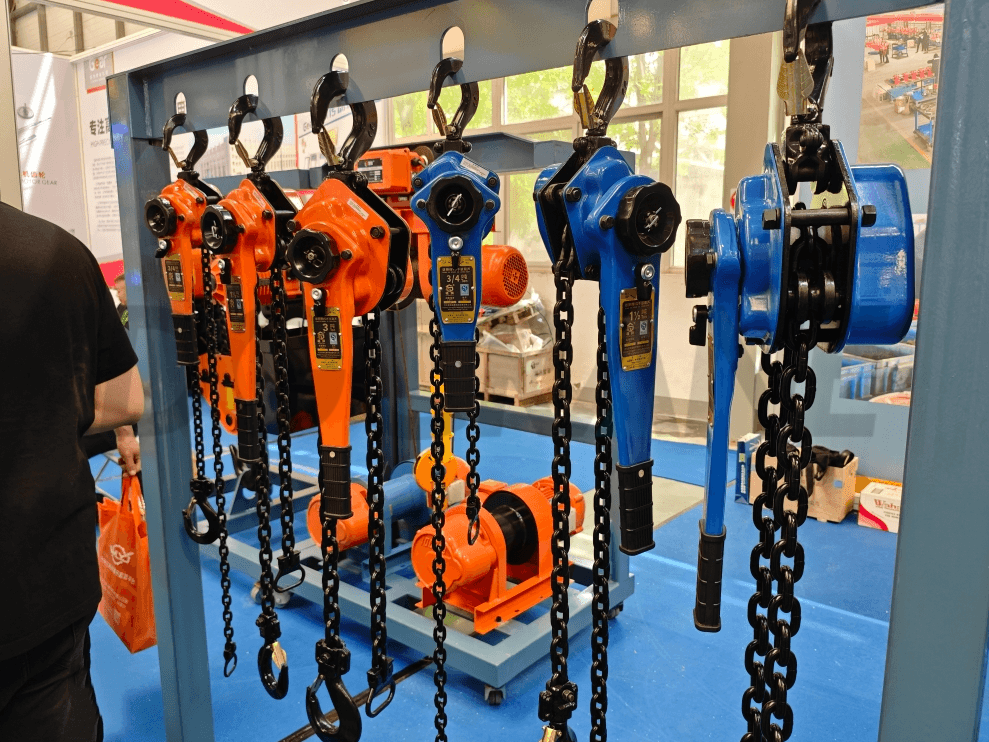
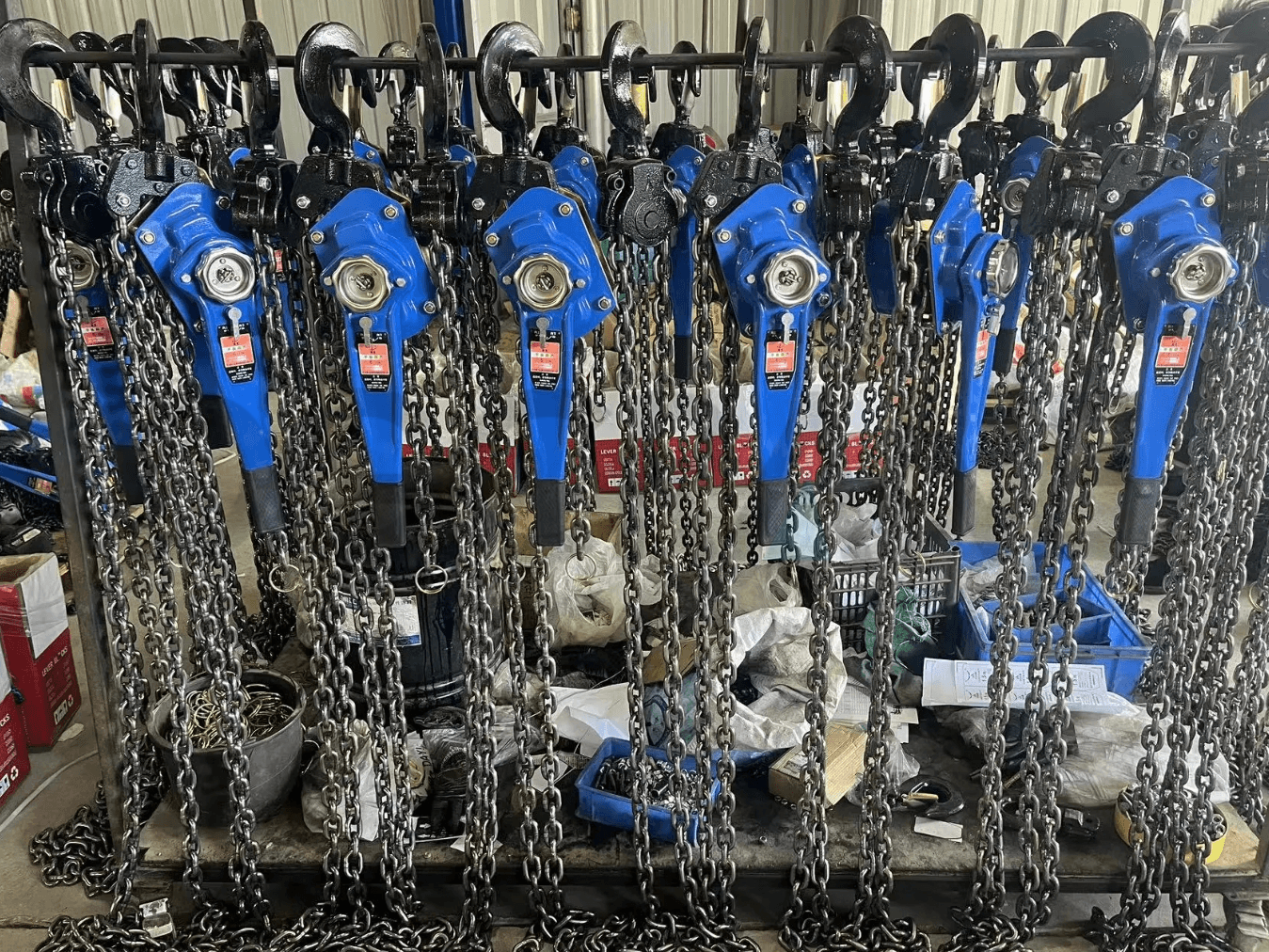
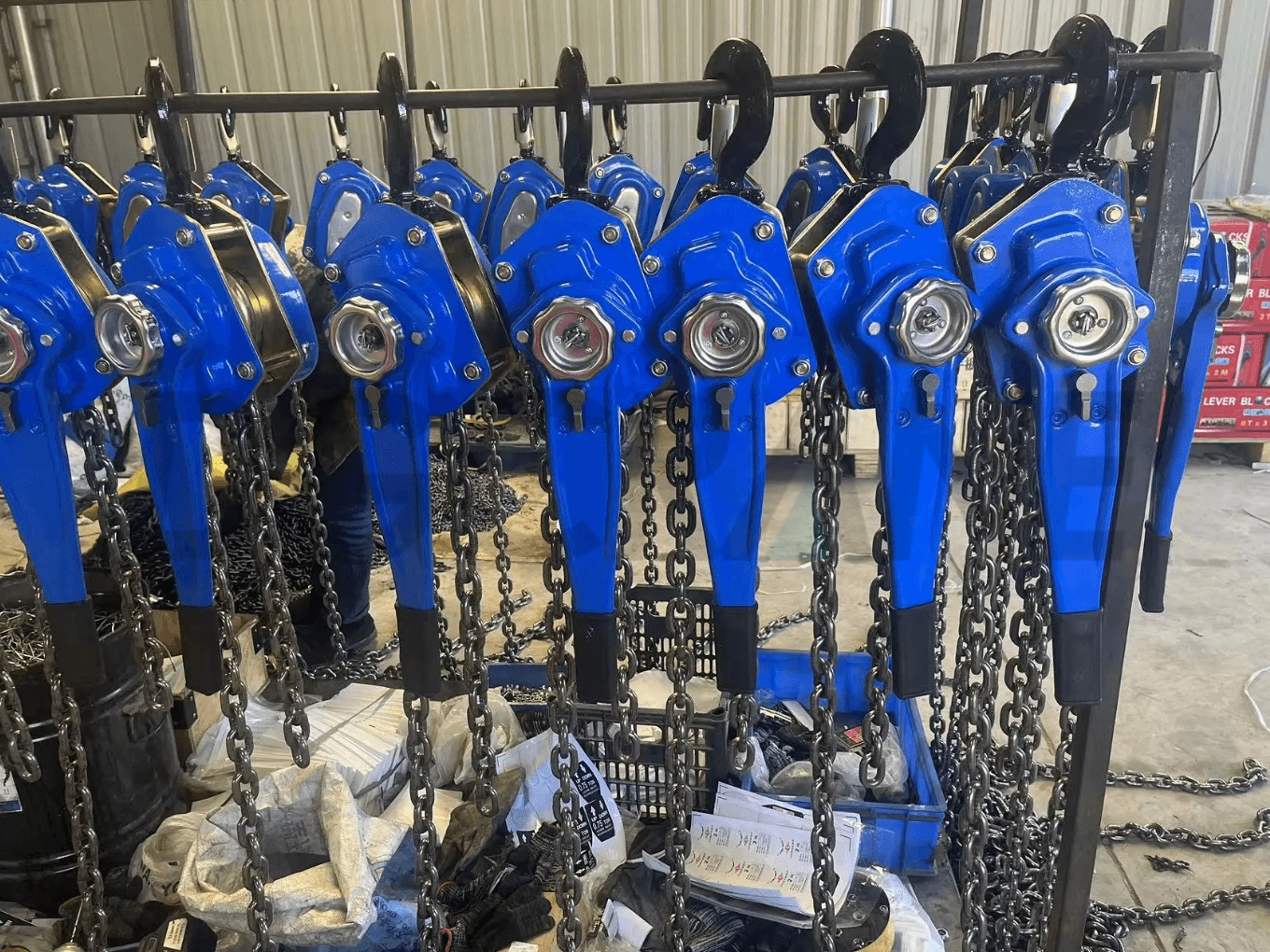
Advantages and Features
- The lifting chain is made of high-strength, surface-coated calibrated chain, offering high strength, corrosion resistance, and wear resistance.
- The body adopts a modular design, ensuring high overall strength and good sealing, which makes maintenance and repair easier.
- The brake system includes an auxiliary braking device, enabling no-load lifting; the chain can be raised or lowered smoothly even when the handle is operated without load.
- The brake uses dual pawls working alternately to guarantee safety and reliability.
- Equipped with a brake-clutch mechanism that clearly distinguishes between “chain pulling” and “load” states. In no-load condition, the chain can be freely pulled for quick hook adjustment, improving work efficiency; under load, it operates safely and reliably.
- The handle features a detachable modular design for easy disassembly and convenient transport.
- The tail end of the lifting chain has a quick-adjustable chain stop device, allowing fast and easy limit position adjustment according to usage, ensuring operational safety.
Main Specifications
| Rated Capacity (kg) | 250 | 500 | 750 | 1500 | 3000 | 6000 | 9000 |
| Lifting Height (m) | 1.5 | 1.5 | 1.5 | 1.5 | 1.5 | 1.5 | 1.5 |
| Test Load (kg) | 315 | 750 | 1125 | 2500 | 4500 | 7500 | 11250 |
| Hand Pull at Full Load (N) | 280 | 350 | 250 | 310 | 410 | 420 | 420 |
| No. of Load Chains | 1 | 1 | 1 | 1 | 2 | 3 | 4 |
| Chain Size (Dia × Pitch, mm) | 4*12 | 5*15 | 6*18 | 8*24 | 10*30 | 10*30 | 10*30 |
| Minimum Distance Between Hooks (mm) | 260 | 350 | 440 | 550 | 650 | 650 | 780 |
| Handle Length (mm) | 160 | 310 | 285 | 410 | 410 | 410 | 410 |
| Net Weight (kg) | 3.6 | 4 | 6.7 | 11 | 17.5 | 25.5 | 49.8 |
Aluminum Alloy Chain Lever Hoist
Made from high-strength magnesium-aluminum alloy, with the chain crafted from specially treated high-strength alloy steel, this hoist significantly reduces its own weight for easy portability. Primarily used for lifting and pulling, the aluminum alloy chain lever hoist offers excellent performance and reliable operation, and can be used without a power source just like other lever hoists.
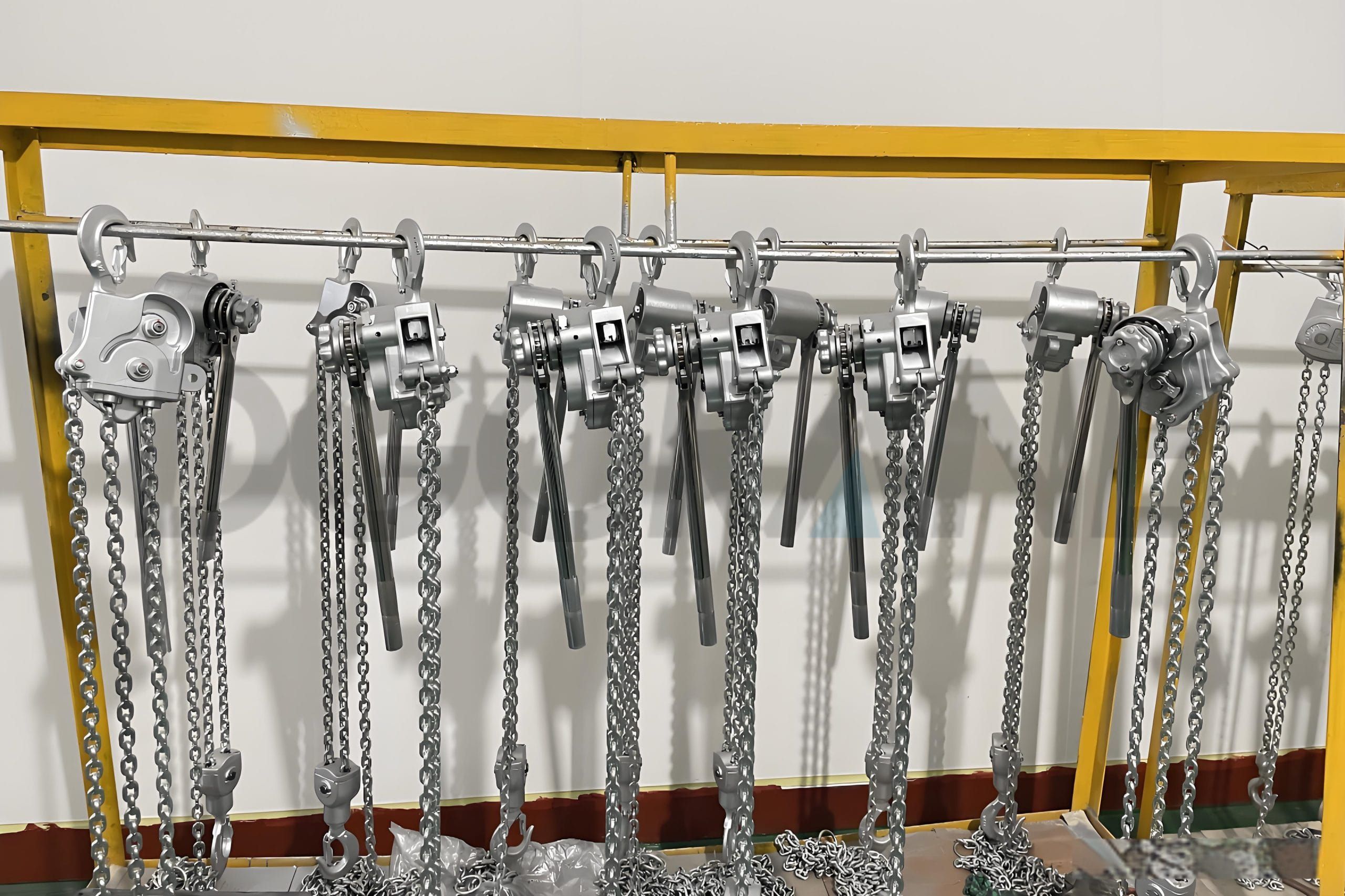
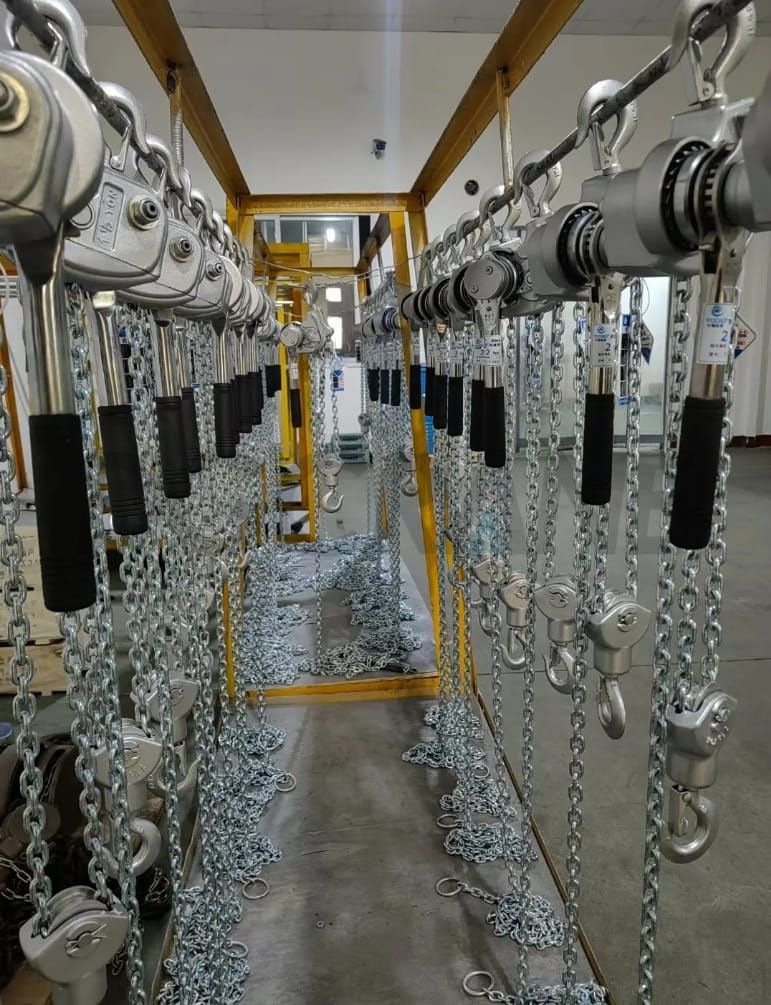
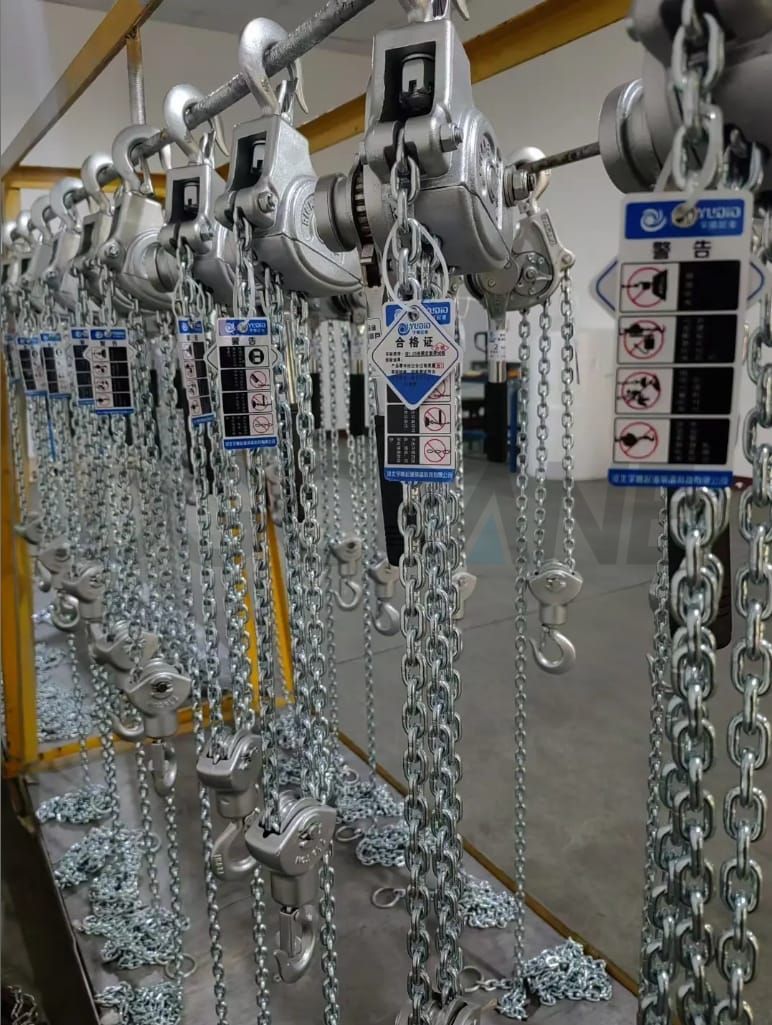
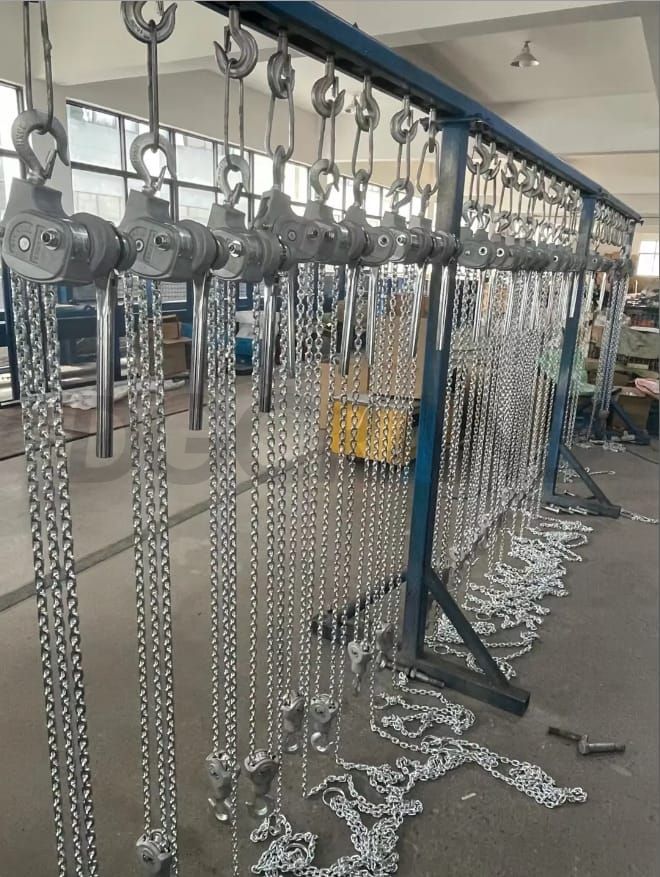
Advantages
- The high-strength, highly ductile aluminum alloy housing greatly enhances product strength while keeping it lightweight.
- The short handle design reduces the effort needed for operation.
- The handle can rotate 360°, offering multiple operating methods in confined spaces.
- The idle sprocket mechanism allows free rotation in neutral, ensuring the chain passes quickly and smoothly.
Main Specifications
| Rated Pulling Capacity (T) | Standard Pulling Length (m) | Test Load (kN) | Hand Lever Force at Full Load (N) | Load Chain Round Steel Diameter (mm) | Number of Load Chain Falls | Minimum Distance Between Hooks (mm) | Net Weight (kg) |
|---|---|---|---|---|---|---|---|
| 3T | 1.5 | 36.8 | 340 | 7 | 1 | 420 | 9.5 |
| 6T (Shackle Type) | 1.5 | 73.5 | 360 | 7 | 2 | 500 | 16.5 |
| 6T (Hook Type) | 1.5 | 73.5 | 360 | 7 | 2 | 535 | 16.3 |
Mini Chain Lever Hoist
The mini chain lever hoist features 360° rotatable upper and lower hooks, is lightweight and easy to carry, requires less manual force to operate, and improves lifting efficiency.
Main Specifications
| Lifting Capacity (kg) | Lifting Height (m) | Test Load (t) | Headroom (mm) | Number of Load Chains | Hand Pull to Lift Full Load (N) | Chain Diameter (mm) | Net Weight (kg) |
|---|---|---|---|---|---|---|---|
| 250 | 1 | 3.75 | 215 | 1 | 125 | 4*12 | 0.35 |
| 500 | 1.5 | 7.5 | 255 | 1 | 180 | 5*15 | 0.55 |
Operation Method for Chain Lever Hoist
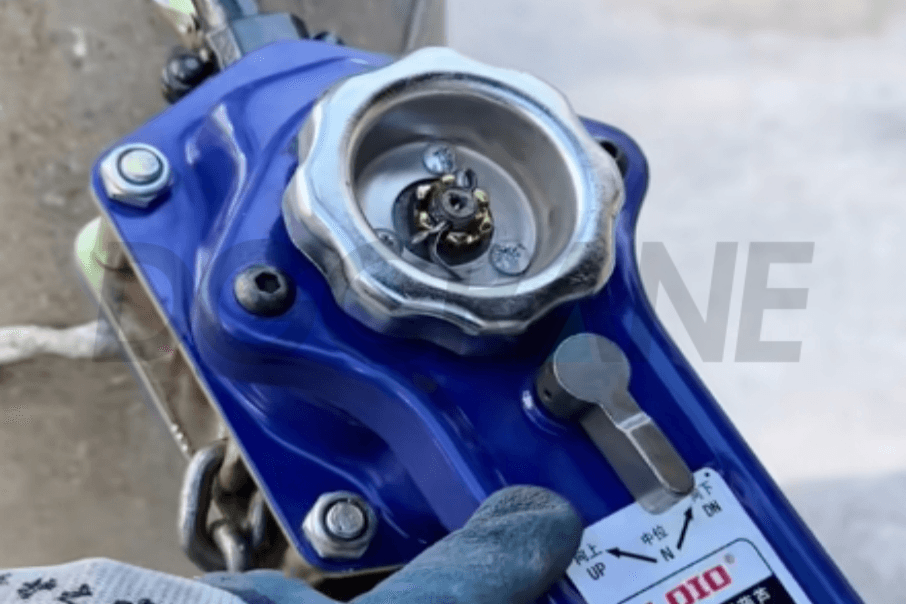
Adjusting the Lower Hook Position
Before lifting a load, you can quickly adjust the lower hook position to improve work efficiency.
Adjustment steps:
Set the selector pawl to the “N” (neutral) position. With your right hand, hold the positioning wheel, and with your left hand, turn the handwheel counterclockwise. This releases the brake, allowing you to either pull the load chain by hand for quick adjustment or rotate the handwheel for finer control of the hook position.
Lifting (Up)
Hook the lower hook onto the load. Then, move the chain stop near the hoist body. Set the selector pawl to the “UP” (lifting) position. Reciprocate the handle to raise the load.
Lowering (Down)
Set the selector pawl to the “DN” (lowering) position. Reciprocate the handle to release and lower the load, completing the operation.
Chain Lever Hoist Maintenance Guidelines
- After use, clean the tensioner thoroughly and apply oil to all moving parts and the lifting chain.
- During storage, keep the hoist away from rain, humidity, and dusty environments. Store it in a dry, clean place.
- Maintenance and repairs must be carried out by personnel familiar with the internal mechanism to prevent improper disassembly by untrained individuals.
- The friction surfaces of the brake must be kept clean and free of oil or grease. Regularly inspect the brake system to avoid accidents caused by brake failure. Replace friction plates immediately if worn.
- Regularly inspect the lifting chain for corrosion, rust, or wear. Replace immediately if severe damage is found. If the length of 5 links at the load-bearing end exceeds 122 mm, the chain has stretched and must be replaced.
- Conduct periodic disassembly and inspection. Replace any worn or deformed parts in time. After cleaning and repairing, perform both no-load and load tests (refer to the “Performance Parameters Table” for load values). Only resume use after confirming proper function and reliable braking.
- If the sleeve on the handle becomes bent or deformed, replace the sleeve assembly immediately.
Aluminum Alloy Wire Rope Lever Hoist
Also known as the wire rope lever puller, this hoist features a high-strength, premium aluminum alloy die-cast housing. The matched wire rope offers exceptional breaking strength and wear resistance, with customizable lengths to meet customer requirements.
It is ideal for factories, mines, construction sites, docks, transportation, and other settings—perfect for equipment installation, cargo lifting, securing, bundling, and pulling. Its advantages are especially evident in pulling at any angle, confined spaces, outdoor operations, and environments without power supply.
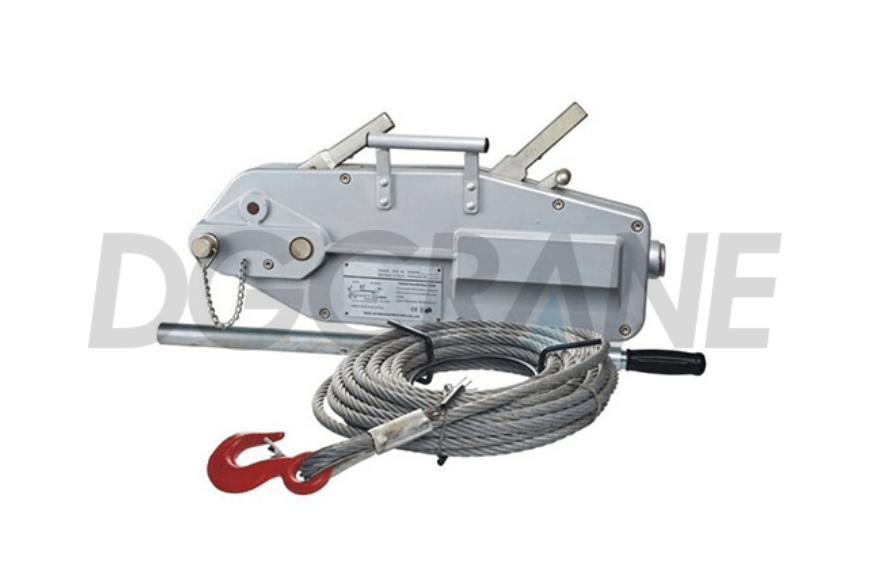
Main Specifications
| Rated Capacity (kg) | Rated Pulling Force (N) | Rated Forward Stroke (mm) | Wire Rope Diameter (mm) | Maximum Load (kg) | Net Weight (kg) |
|---|---|---|---|---|---|
| 800 | 341 | ≥52 | 8.3 | 1200 | 6.4 |
| 1600 | 400 | ≥55 | 11 | 2400 | 12 |
| 3200 | 438 | ≥28 | 16 | 4000 | 23 |
| 5400 | 850 | ≥25 | 20 | 8100 | 58 |
Iron Housing Wire Rope Lever Hoist
The iron housing wire rope lever hoist features a compact size, light weight, and long service life. It is especially suitable for power-free environments, used for heavy lifting, equipment installation, mechanical pulling, and overhead wire work. It also allows quick release of the brake under no-load conditions for fast hook movement, enhancing user work efficiency.
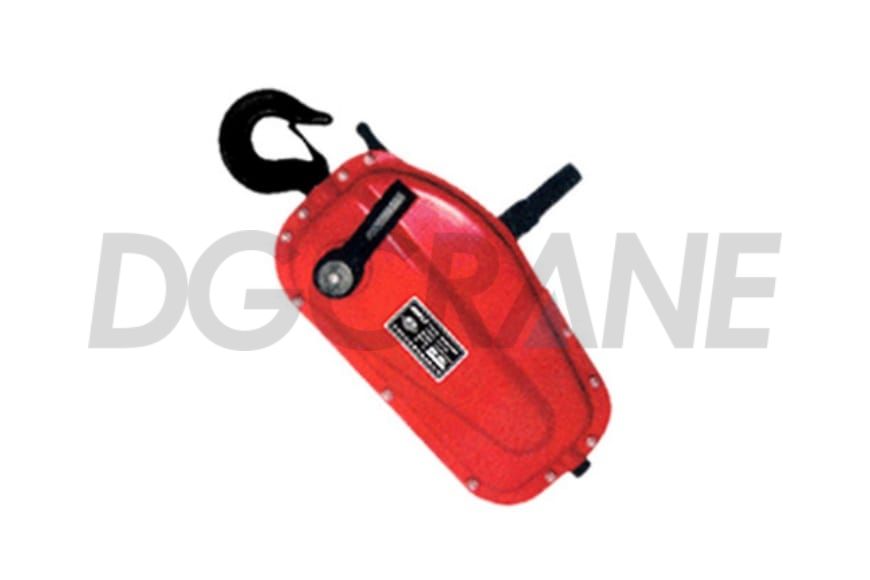
Main Specifications
| Rated Load (kg) | Hand Pull at Rated Load (N) | Wire Rope Travel per Handle Stroke (mm) | Wire Rope Diameter (mm) | Hoist Weight (kg) | Dimensions (mm) |
|---|---|---|---|---|---|
| 1500 | ≤441 | ≥50 | 9 | 9.5 | 468 × 270 × 130 |
| 3000 | ≤441 | ≥25 | 12.5 | 14 | 620 × 350 × 150 |
Precautions for Using a Wire Rope Lever Hoist
- Before using the wire rope lever hoist, check that all handle movements are flexible and that friction parts are properly lubricated. If handle movement is abnormal, repair is required.
- Do not operate the forward and reverse handles simultaneously during use.
- Do not operate the release handle while working.
- To retract the wire rope, first remove the load, then operate the release handle.
- Never overload the hoist.
- When working at heights, always use a safety device; otherwise, do not use the hoist.




































































































































